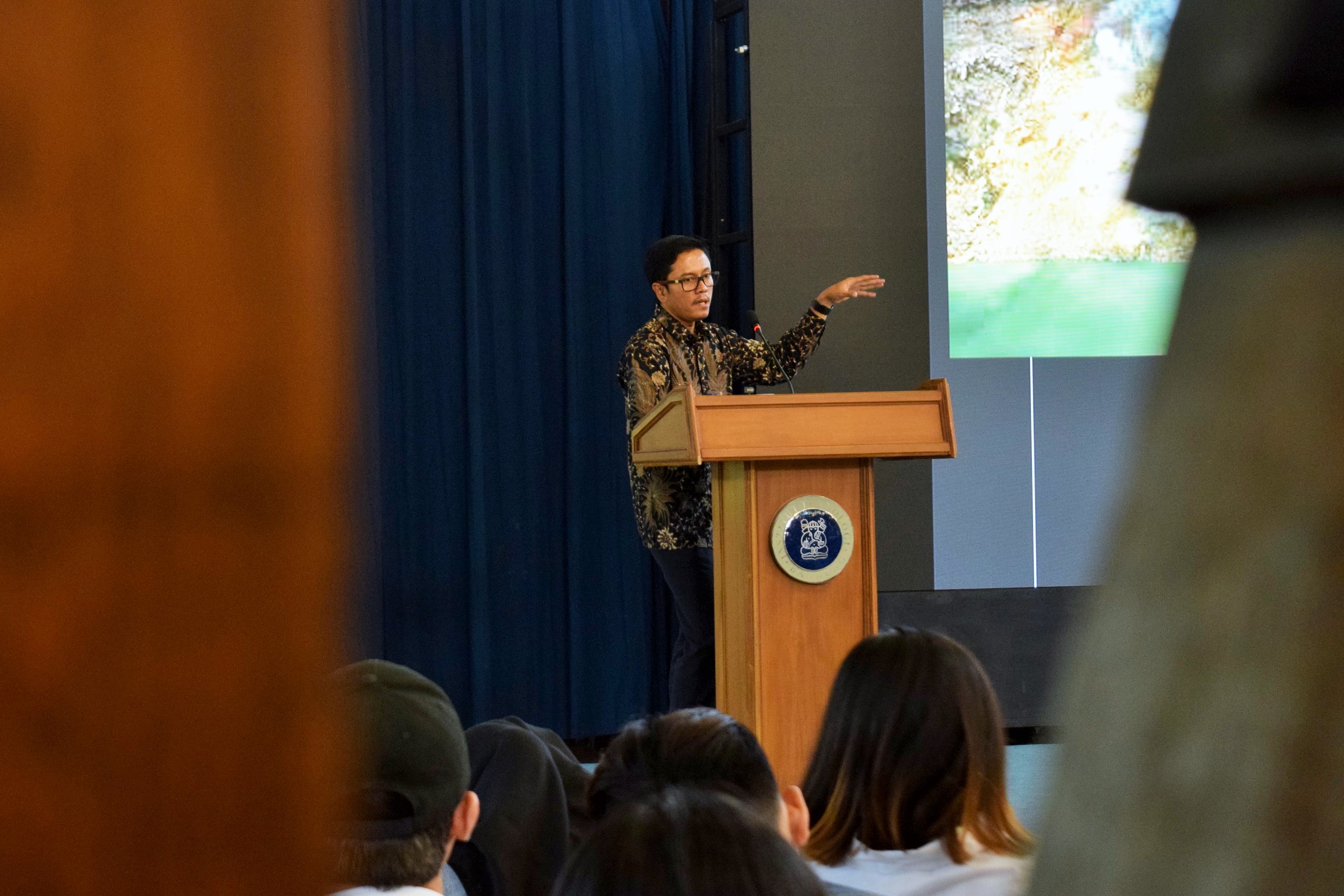The Difference between Effusive Eruption and Explosive Eruption, Explained on Public Lecture Held by FITB

BANDUNG, itb.ac.id-A webinar entitled "Investigating the Mechanism and Products that Define Explosive and Effusive Eruption" was held by Faculty of Earth Science and Technology ITB (FITB ITB) on Thursday, (9/9/2021). This webinar was attended by Michael Cassidy, a researcher from Oxford University, as the main speaker. The event was held virtually through Zoom. The event was opened by Dr. Irwan Meilano, ST, M.Sc., and moderated by Dr. eng. Mirzam Abdurrachman, S.T, M.T.
A brief history of volcanoes monitoring in Indonesia was explained by Dr. Irwan as an opening. He explained that volcano monitoring activities have been going on since 1920. "The main purpose of volcano monitoring is to reduce casualties, a very simple and noble mission," he said.
The event was continued with a presentation from Dr. Michael on Effusive Eruption. He explained that in general, magma that flows from an effusive explosion has a low velocity so that it only affects the area around the volcano. The slow magma flow makes it easier for the community and the government to evacuate as an effort to minimize fatalities. In some cases, such as the eruptions of Mount Nyiragongo and Mount Merapi, the magma flow was relatively fast, causing great damage.
Dr. Michael then further explained that effusive eruptions are often found in volcanoes that have mafic lava. Mafic lava that is generated from this eruption can flow very far. The heat that the mafic lava cause can also last for months if insulated in a lava pit. "The upper layers of mafic lava flows experience an auto-brecciated phenomenon, or the breakdown of the frozen lava crust into several clumps," said Dr. Michael.
Continuing his presentation, he explained about effusive explosive deposits on volcanoes with felsic lava. According to him, the effusive eruption of felsic lava will form a new clump around the eruption crater. This happens because of the high level of the felsic lava viscosity. The dome can block the lava flow and trigger new eruptions. The dome formed from frozen felsic lava is usually unstable, so it is possible to collapse at any time.
He then explained about explosive eruption. One of the main causes of explosive eruptions is the blockage of the magma vent by frozen felsic lava. Explosive eruptions eject volcanic ash with a high powerful force, and are possible to reach a height of ten kilo meters. The volcanic ash is actually the magma which was destroyed in the eruption.
"Explosive eruption can cause effects that can be felt all over the country, or even the whole world," he continued. Volcanic ash generated by explosive eruptions can affect flights and weather patterns, as well as causing acid rain. Further, a large-scale eruption can even cause global climate change.
On the next presentation, Dr. Michael explained about Explosive Eruption on a volcano with mafic lava. He explained that this type of eruption is rare and usually has a smaller effect, like the eruption of Mount Rinjani. He also added that explosive eruptions from mafic lava are usually followed by vomited lava flows from the eruption source.
Reporter: Favian Aldilla (Teknik Sipil, 2019)
Translator: Tamara Maharani Alamsyah (Seni Rupa, 2020)

scan for download






